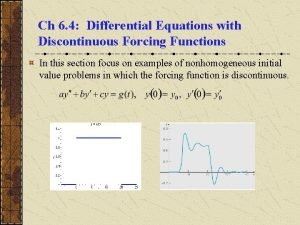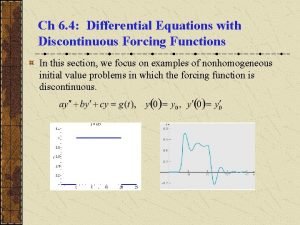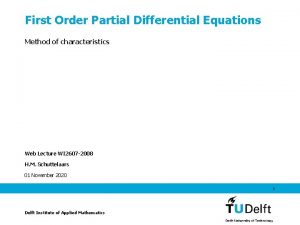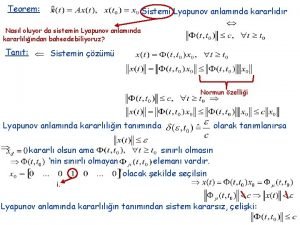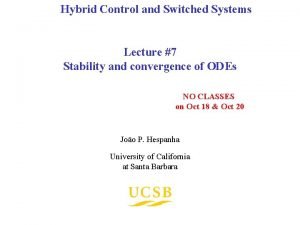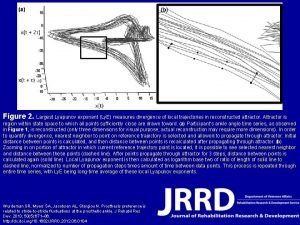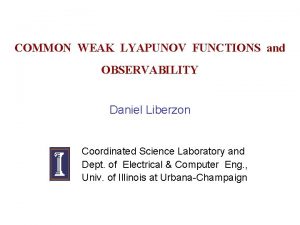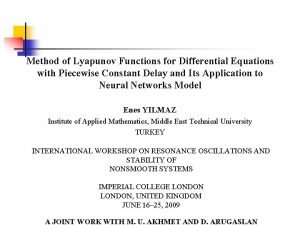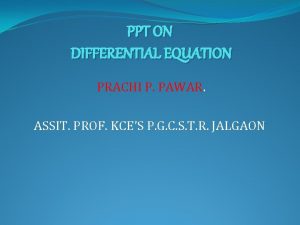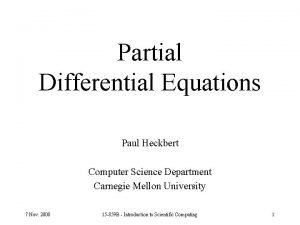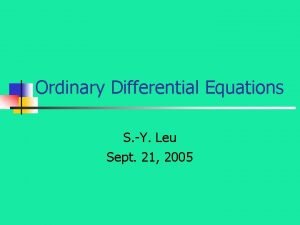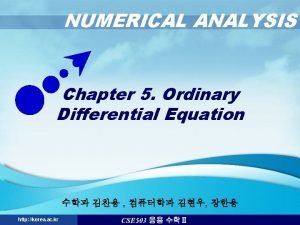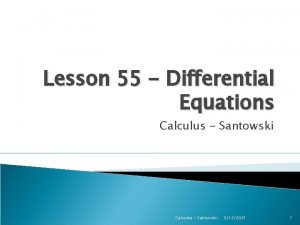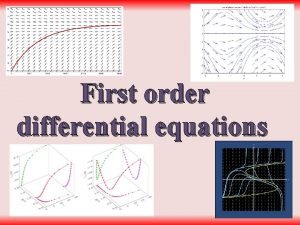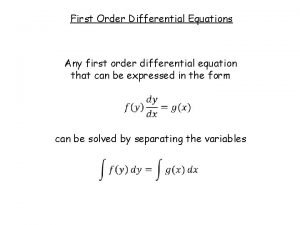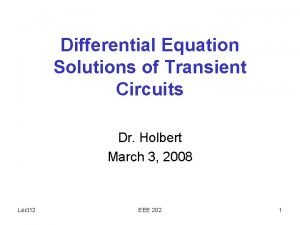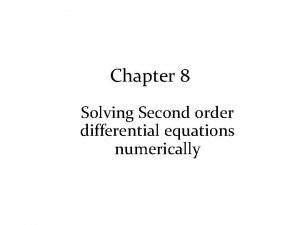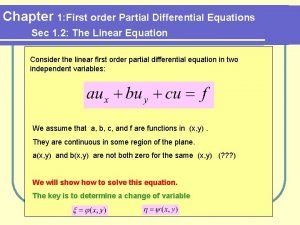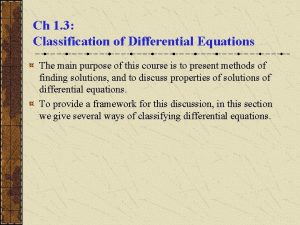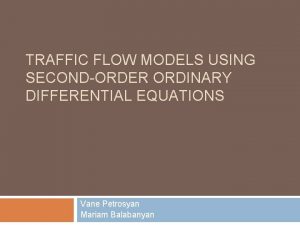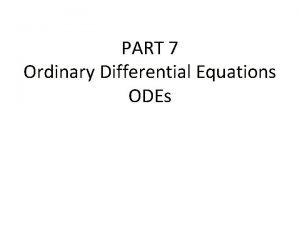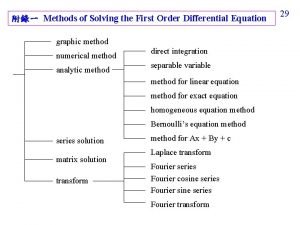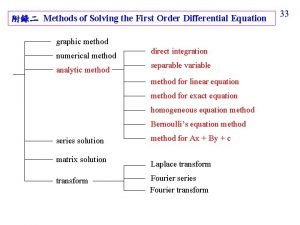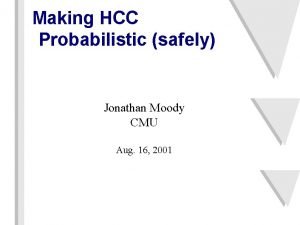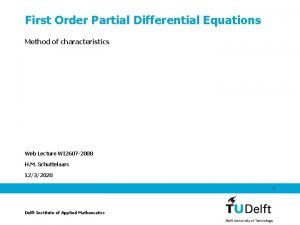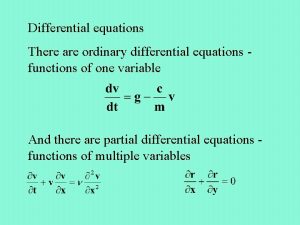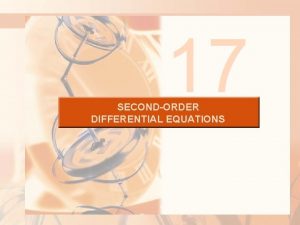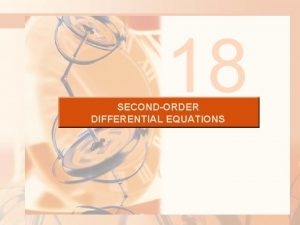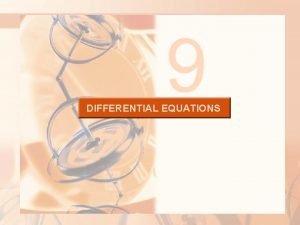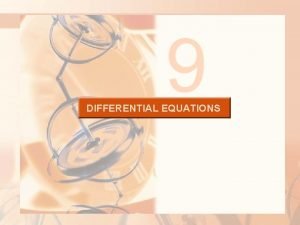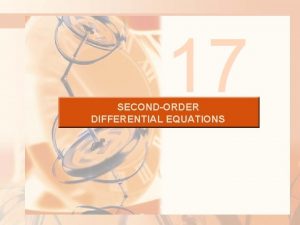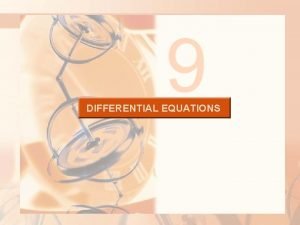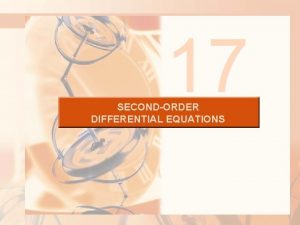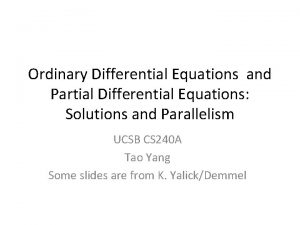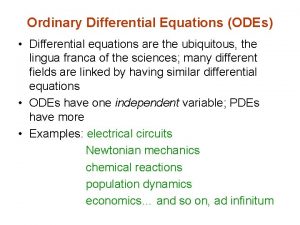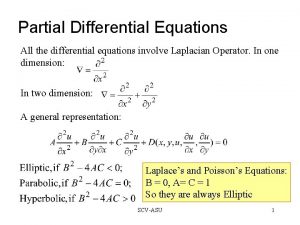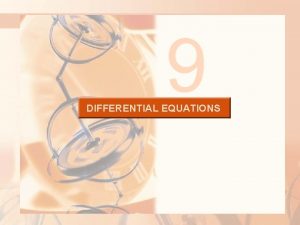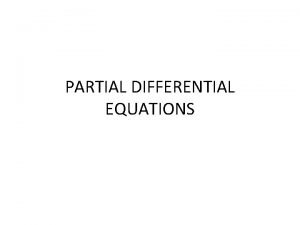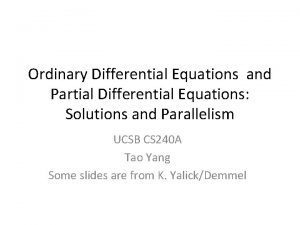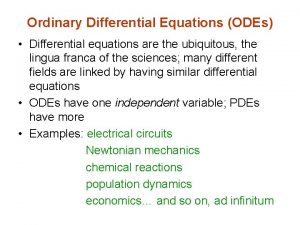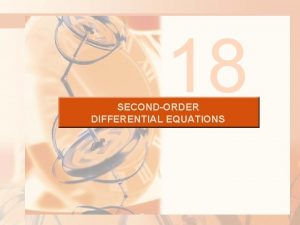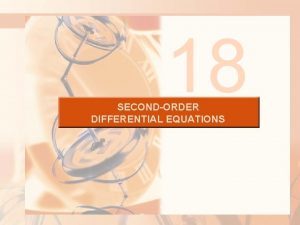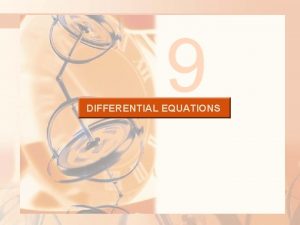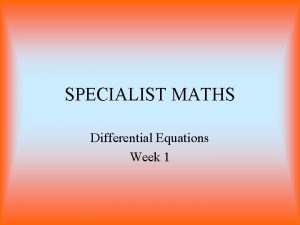Method of Lyapunov Functions for Differential Equations with

































- Slides: 33

Method of Lyapunov Functions for Differential Equations with Piecewise Constant Delay and Its Application to Neural Networks Model Enes YILMAZ Institute of Applied Mathematics, Middle East Technical University TURKEY INTERNATIONAL WORKSHOP ON RESONANCE OSCILLATIONS AND STABILITY OF NONSMOOTH SYSTEMS IMPERIAL COLLEGE LONDON, UNITED KINGDOM JUNE 16– 25, 2009 A JOINT WORK WITH M. U. AKHMET AND D. ARUGASLAN

Outline n n Introduction and preliminaries Main results Application to Neural Networks model Summary and Conclusion

Aims n n n Investigate the second Lyapunov Method for differential equations with piecewise constant argument of generalized type (EPCAG). Although, these equations include delay, stability conditions are only given in terms of Lyapunov functions; that is no functionals are used. Apply Lyapunov method to Recurrent neural networks, especially, Cellular Neural Networks (CNNs) and Hopfield-type Neural Networks (HNNs). L. O. Chua and L. Yang, Cellular neural networks: Theory, IEEE Trans. Circuits Syst. 35 (1988), pp. 1257 -1272. L. O. Chua and L. Yang, Cellular neural networks: Applications, IEEE Trans. Circuits Syst. 35 (1988), pp. 1273 -1290. J. J. Hopfield, Neurons with graded response have collective computational properties like those of two-stage neurons, Proc. Nat. Acad. Sci. Biol. 81 (1984), pp. 3088 -3092.

1. Introduction and preliminaries The main novelties of this talk are the followings: n Reduction to discrete equations n Total stability: originate from a special theorem by Malkin W. Hahn, Stability of Motion, Berlin, Springer-Verlag, 1967. N. Rouche, P. Habets and M. Laloy, Stability theory by Liapunov’s direct method, New. York, Springer-Verlag, 1977. I. G. Malkin, Stability in the case of constantly acting disturbances, Prickl. Mat. , 8, (1944) 241 -245. n Comparison of stability of EPCAG and ODE

1. Introduction and preliminaries

1. Introduction and preliminaries

1. Introduction and preliminaries

1. Introduction and preliminaries n M. U. Akhmet, Stability of differential equations with piecewise constant arguments of generalized type, Nonlinear Analysis 68 (2008) 764 -803.

1. Introduction and preliminaries n M. U. Akhmet, Integral manifolds of differential equations with piecewise constant argument of generalized type, Nonlinear Analysis 66 (2007) 367 -383. n. M. U. Akhmet, On the reduction principle for differential equations with piecewise constant argument of generalized type, J. Math. Anal. Appl. 336 (2007) 646 -663.

2. Main results

2. Main results

2. Main results If Change with

2. Main results Theorems provide criteria for stability which are entirely constructed by Lyapunov functions. As for the functionals, they appear only in the proof of theorems. We see that conditions of our result, which guarantee stability, are definitely formulated without functionals…

2. Main results n M. U. Akhmet and D. Arugaslan, Lyapunov-Razumikhin method for differential equations with piecewise constant argument, Discrete Contin. Dyn. Syst. , (in press)

2. Main results

2. Main results So what is the advantage of this method? We can see that theorems obtained by Lyapunov-Razumikhin method provide larger class of equations. n However From the perspective of the constructive analysis, the present method may be preferable, since, for example, in the proof of uniform stability theorems, it is possible to evaluate the domains of attraction. n

2. Main results Besides above theorems, the following assertions may be useful for analysis of the stability of EPCAG. n. These theorems are important and have their own distinctive values with the newly required properties of the Lyapunov function. n If Change with

2. Main results n Apply to recurrent neural networks model…

3. Application to Neural Networks Model n Typical Neuron

3. Application to Neural Networks Model n The Hopfield Neural Network (1982 -1984) n C: total input capacitance n a: voltage input n p: input conductance n w: conductance n x: output voltage

3. Application to Neural Networks Model n The input voltage is determined by while the output voltage is n C: total input capacitance n a: voltage input n p: input conductance n w: conductance n x: output voltage

3. Application to Neural Networks Model n Consider the following RNNs model described by EPCAG n The following assumptions will be needed throughout the talk:

3. Application to Neural Networks Model n First, let us give the existence of a unique equilibrium as fallows: n S. Mohammad and K. Gopalsamy, Exponential stability of continuous-time and discrete-time CNNs with delays, Appl. Mat. and Comp. , 135 (2003), pp. 1738

3. Application to Neural Networks Model n Next, the existence of uniqueness of solutions:

3. Application to Neural Networks Model In order to get the stability theorems, we give the following important lemma… n Now, we establish several criteria for global exponential stability based on the method of Lyapunov functions… n

3. Application to Neural Networks Model Define a Lyapunov function by

3. Application to Neural Networks Model n If we choose a different Lyapunov function defined as We find new stability conditions for RNNs…

3. Application to Neural Networks Model n Let us give an example with simulations to illustrate our results

3. Application to Neural Networks Model

3. Application to Neural Networks Model

3. Application to Neural Networks Model

4. Summary and Conclusion n n It is the first time that the method of Lyapunov functions for EPCAG is applied to the model of RNNs. Our method gives new ideas not only from the modeling point of view, but also from that of theoretical opportunities since RNNs involves piecewise constant argument of delay type. Lyapunov functions give an opportunity to estimate domains of attraction which allows us particular interest to evaluate the performance of RNNs. The method given in this talk may be extended to study more complex systems. M. U. Akhmet, Dynamical synthesis of quasi-minimal sets, Inter. Journal of Bif. And Chaos, (Accepted)

References n n n M. U. Akhmet and E. Yilmaz, Hopfield-type neural networks systems with piecewise constant argument, Int. Journal of Q. Diff. and Appl. (Accepted). M. U. Akhmet and E. Yilmaz, Impulsive Hopfield-type neural networks systems with piecewise constant argument, (Submitted). M. U. Akhmet, D. Arugaslan and E. Yilmaz, Stability in cellular neural networks with piecewise constant argument, (Submitted). M. U. Akhmet, D. Arugaslan and E. Yilmaz, Stability analysis of recurrent neural networks with deviated argument of mixed type, (Submitted). M. U. Akhmet, D. Arugaslan and E. Yilmaz, Method of Lyapunov functions for differential equations with piecewise constant delay, (Submitted). M. U. Akhmet and E. Yilmaz, Global attractivity in impulsive neural networks with piecewise constant delay, (in preparation). THANKS FOR YOUR ATTENTION!
 Differential equations with discontinuous forcing functions
Differential equations with discontinuous forcing functions Differential equations with discontinuous forcing functions
Differential equations with discontinuous forcing functions Partial differential equations examples
Partial differential equations examples Lyapunov teoremi
Lyapunov teoremi Stability control system
Stability control system Lyapunov stability
Lyapunov stability Exponently
Exponently Lyapunov
Lyapunov Lyapunov
Lyapunov Differential equations projects
Differential equations projects Order and degree of differential equation ppt
Order and degree of differential equation ppt Pde paula
Pde paula Cengage differential equations
Cengage differential equations How to solve linear ode
How to solve linear ode Euler midpoint method
Euler midpoint method Carrying capacity equation calculus
Carrying capacity equation calculus Differential examples
Differential examples Integrating factor of differential equation
Integrating factor of differential equation First order ode
First order ode First order ode
First order ode Ordinary differential equations general solution
Ordinary differential equations general solution Separation of variables differential equations
Separation of variables differential equations Transient solution differential equations
Transient solution differential equations Damped pendulum equation of motion
Damped pendulum equation of motion Pde first order
Pde first order Classifying differential equations
Classifying differential equations Traffic flow differential equations
Traffic flow differential equations First order ordinary differential equations
First order ordinary differential equations Shooting method using euler's method
Shooting method using euler's method Variable separable
Variable separable Variable separable
Variable separable Slidetodoc.com
Slidetodoc.com Differential equations
Differential equations Bernoulli differential equation formula
Bernoulli differential equation formula
